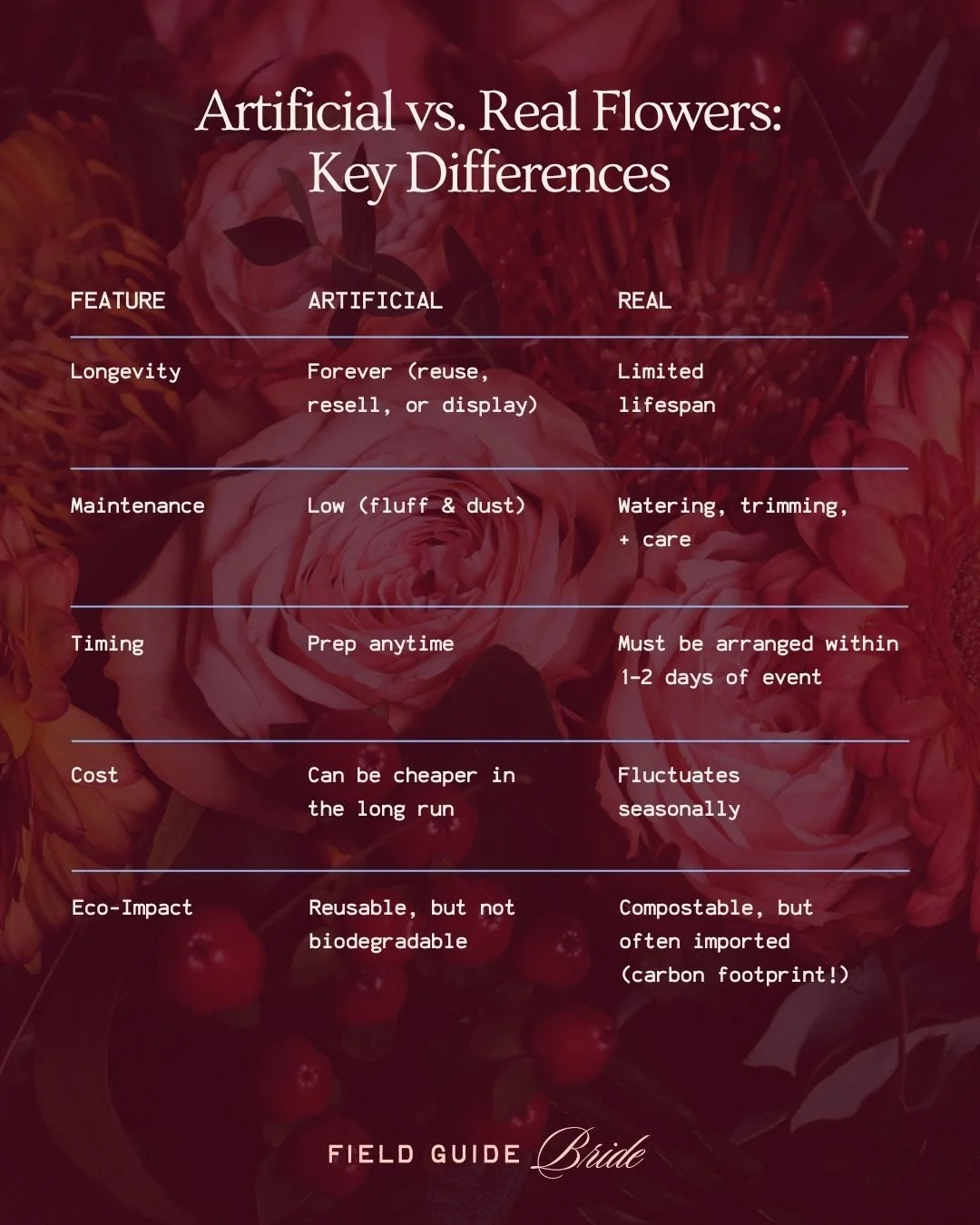Why More Brides Are Choosing Artificial Wedding Flowers (and Loving It)
Let’s talk about something that’s quietly trending (and for good reason): artificial wedding flowers. Gone are the days of plastic-looking petals and weirdly shiny roses — today’s faux florals are so realistic you’ll find yourself doing double takes. Whether you’re planning a destination elopement, a DIY backyard wedding, or you just want to stretch your budget without sacrificing style, artificial flowers might be your new best friend.
The Pros of Artificial Wedding Flowers
They’re Forever Blooms
Unlike fresh flowers, faux florals won’t wilt, bruise, or die mid-reception. You can prep them months in advance, use them for your engagement shoot, and keep them as a forever keepsake after the big day.
Design by @gather_botanical
Stress-Free Timeline
No early morning deliveries to worry about or wondering if your blooms will open in time. You can order, arrange, and perfect your florals weeks (or even months) ahead. This is especially ideal for destination weddings or DIY setups where timing can be chaotic.
Weatherproof & Travel-Friendly
Hot summer day? Freezing mountaintop elopement? No problem. Artificial flowers won’t droop, melt, or brown in extreme temps, and they’re easy to pack up for transportation without a cooler or water source.
Allergy-Friendly
No sneezing through your vows. Enough said.
Budget Flexibility
While premium faux flowers can be an investment up front, they can still come out cheaper overall, especially if you’re doing your own arrangements or reusing them across multiple events (ceremony → reception → brunch).
The Cons (Because Let’s Be Real)
The Touch Test
Sometimes, even the most realistic faux blooms give themselves away up close, especially to the trained eye. High-quality silk or latex florals look best, but they can get pricey.
No Natural Scent
Artificial florals means you won’t get that dreamy, fresh-flower smell. (Though you can cheat with a floral-scented candle or diffuser to add a sensory layer.)
Storage & Cleanup
After the wedding, you’ll need to decide what to do with your flowers – keep, resell, or store for future events. They don’t compost like fresh ones.
Limited Movement
Real flowers have a certain softness and organic bend to them that faux versions can’t always replicate perfectly. For more natural, wild arrangements, it takes skill (and sometimes wire cutters) to fake that flowy look.
When to Start Shopping
3–6 months before your wedding:
Start browsing. Compare vendors, order sample stems, and test for color accuracy and quality. Look at photos in natural light to see how true-to-life they appear.
2–3 months before:
Place your main order. This gives you plenty of time for shipping delays or exchanges.
1–2 months before:
Assemble or arrange your designs (or schedule time with your florist or a faux floral designer). Adjust stems, fluff petals, and finalize details like ribbon, vases, and accents.
1 week before:
Do a final setup check and pack everything for easy transport – no refrigeration or water needed!
The Final Word
Artificial wedding flowers are no longer the “budget backup plan”. They’re a smart, beautiful, and low-stress choice that gives you control over your timeline, costs, and creative vision. Whether you go full faux or mix in a few real elements (like greenery or local blooms for scent), the modern artificial flower world is full of possibilities that look (and photograph) just as stunning. After all, your wedding should be about you, instead of wondering if your peonies survived the car ride or not.
Get inspired below and click through for more on Instagram!







